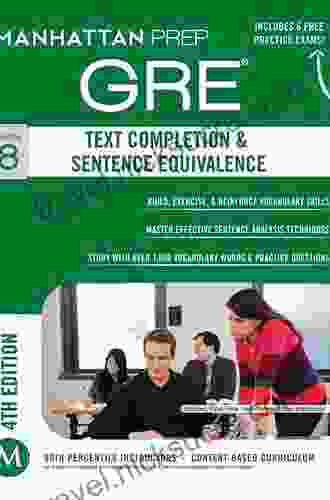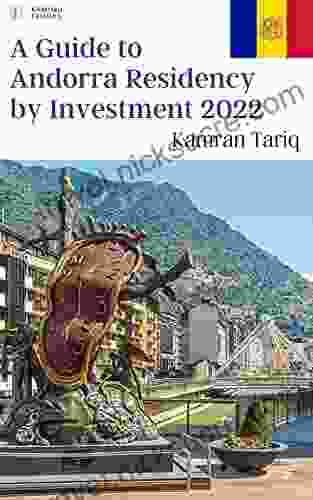Programming PHP: Creating Dynamic Web Pages with Server-Side Scripting

PHP (Hypertext Preprocessor) is a widely-used, open-source, general-purpose scripting language that is particularly well-suited for web development. PHP code is embedded into HTML documents, and when a web page is requested, the PHP code is executed on the server before the page is sent to the client's browser. This allows for dynamic content to be generated, such as pages that display personalized information, interact with databases, or process user input.
4.5 out of 5
| Language | : | English |
| File size | : | 8418 KB |
| Text-to-Speech | : | Enabled |
| Screen Reader | : | Supported |
| Enhanced typesetting | : | Enabled |
| Print length | : | 941 pages |
Getting Started with PHP
To get started with PHP, you will need a web server that supports PHP, such as Apache or Nginx, and a PHP interpreter. Once you have installed PHP on your server, you can create a simple PHP file with the following code:
<?php echo "Hello, world!"; ?>
When you access this file in your browser, you will see the message "Hello, world!" displayed on the page. This simple example demonstrates the basic syntax of PHP code, which is embedded within HTML tags. The <?php and ?> tags mark the beginning and end of PHP code, and any PHP code within these tags will be executed on the server before the page is sent to the client.
Creating Dynamic Web Pages
One of the main advantages of PHP is its ability to create dynamic web pages. Dynamic web pages are pages that can change their content based on user input or other factors. For example, a dynamic web page could display a list of products from a database, allow users to add items to a shopping cart, or process a form submission.
To create a dynamic web page, you can use PHP to connect to a database, retrieve data, and generate HTML code that displays the data on the page. For example, the following PHP code connects to a MySQL database and retrieves a list of products:
<?php $servername ="localhost"; $username ="root"; $password =""; $dbname ="products";
$conn = new mysqli($servername, $username, $password, $dbname); if ($conn->connect_error){die("Connection failed: " . $conn->connect_error); }
$sql ="SELECT * FROM products"; $result = $conn->query($sql);
if ($result->num_rows > 0){while($row = $result->fetch_assoc()){echo "Product ID: " . $row["product_id"] . "
"; echo "Product Name: " . $row["product_name"] . "
"; echo "Product Price: " . $row["product_price"] . "
"; }}else { echo "0 results"; }
$conn->close(); ?>
This code uses the mysqli extension to connect to the database and execute a query. The results of the query are stored in the $result variable, and the fetch_assoc() method is used to retrieve each row of data as an associative array. The code then loops through the results and displays the product ID, product name, and product price for each product.
Advanced PHP Techniques
Once you have mastered the basics of PHP, you can explore more advanced techniques to create more complex and interactive web applications. These techniques include:
- Object-oriented programming: PHP supports object-oriented programming, which allows you to create classes and objects to organize your code and make it more reusable.
- Database access: PHP provides a variety of extensions for connecting to and interacting with databases, including MySQL, PostgreSQL, and SQLite.
- Error handling: PHP provides a robust error handling system that allows you to handle errors and exceptions in your code.
- Session management: PHP provides a session management system that allows you to store user-specific data on the server.
- Security: PHP provides a variety of security features to help you protect your web applications from attacks.
PHP is a powerful and versatile scripting language that is well-suited for web development. By learning PHP, you can create dynamic web pages, interact with databases, and build complex web applications. If you are interested in learning more about PHP, there are many resources available online, including tutorials, documentation, and forums.
4.5 out of 5
| Language | : | English |
| File size | : | 8418 KB |
| Text-to-Speech | : | Enabled |
| Screen Reader | : | Supported |
| Enhanced typesetting | : | Enabled |
| Print length | : | 941 pages |
Do you want to contribute by writing guest posts on this blog?
Please contact us and send us a resume of previous articles that you have written.
 Fiction
Fiction Non Fiction
Non Fiction Romance
Romance Mystery
Mystery Thriller
Thriller SciFi
SciFi Fantasy
Fantasy Horror
Horror Biography
Biography Selfhelp
Selfhelp Business
Business History
History Classics
Classics Poetry
Poetry Childrens
Childrens Young Adult
Young Adult Educational
Educational Cooking
Cooking Travel
Travel Lifestyle
Lifestyle Spirituality
Spirituality Health
Health Fitness
Fitness Technology
Technology Science
Science Arts
Arts Crafts
Crafts DIY
DIY Gardening
Gardening Petcare
Petcare Ivy Smoak
Ivy Smoak Ana Maria Vasquez
Ana Maria Vasquez Glen Albaugh
Glen Albaugh Michael Gass
Michael Gass Josh Reynolds
Josh Reynolds Ulf Hannerz
Ulf Hannerz Dana Richardson
Dana Richardson Richard W Hamming
Richard W Hamming Mark R Leary
Mark R Leary Gravity Prints
Gravity Prints Kristen Fischer
Kristen Fischer Cirrus Teacher Certification Exam Prep Team
Cirrus Teacher Certification Exam Prep Team Chris Rawson
Chris Rawson Andon Rangelov
Andon Rangelov Gurmukh Kaur Khalsa
Gurmukh Kaur Khalsa Amy Thielen
Amy Thielen Bethany Griggs
Bethany Griggs Kenneth M Adams
Kenneth M Adams Leo Christie Phd Lmft
Leo Christie Phd Lmft Magda Gerber
Magda Gerber Gary Bethea
Gary Bethea Galit Shmueli
Galit Shmueli Dominique Moceanu
Dominique Moceanu Dinah Dye
Dinah Dye Robyn Stone
Robyn Stone Maya Payne Smart
Maya Payne Smart Sarah Coxon
Sarah Coxon Ann Richardson
Ann Richardson Brandon Stooksbury
Brandon Stooksbury My Daily Spanish
My Daily Spanish W R Cheney
W R Cheney Andrea J Buchanan
Andrea J Buchanan Bill Heavey
Bill Heavey Shannon Mayer
Shannon Mayer Nat Kringoudis
Nat Kringoudis Carola Schmidt
Carola Schmidt Sam Farmer
Sam Farmer Thomas Mcintyre
Thomas Mcintyre Ritesh Modi
Ritesh Modi Lucy Parsons
Lucy Parsons Jo Kessel
Jo Kessel Diccon Bewes
Diccon Bewes Kelly Quindlen
Kelly Quindlen James D Stein
James D Stein Carol Clements
Carol Clements Jim Marggraff
Jim Marggraff Ruth King
Ruth King Zoyla Arana
Zoyla Arana Amy Waeschle
Amy Waeschle Greg Lim
Greg Lim Ron Miscavige
Ron Miscavige Tamara Arnold
Tamara Arnold Lebawit Lily Girma
Lebawit Lily Girma River J Hopkins
River J Hopkins Natalie N Hooks
Natalie N Hooks Sheri Grunska
Sheri Grunska Daniel Winter
Daniel Winter Amy Ramos
Amy Ramos Hayley Wickenheiser
Hayley Wickenheiser Evelina Weidman Sterling
Evelina Weidman Sterling Emma Coburn
Emma Coburn Felice Austin
Felice Austin Marrae Kimball
Marrae Kimball M D Johnson
M D Johnson Richard M Pino
Richard M Pino Buck Brannaman
Buck Brannaman Vicky Noland Fitch
Vicky Noland Fitch Amy J L Baker
Amy J L Baker Lucille Jorgensen Rn
Lucille Jorgensen Rn Mark Owens
Mark Owens Jenny Schoberl
Jenny Schoberl Amy Lucas
Amy Lucas Marcia Bjornerud
Marcia Bjornerud Rick Noren
Rick Noren Thomas Armstrong
Thomas Armstrong Friedrich Nietzsche
Friedrich Nietzsche Sharlene Hesse Biber
Sharlene Hesse Biber Leanne Owens
Leanne Owens Sara Roahen
Sara Roahen John Gibbons
John Gibbons Jonathan Mark Eaton
Jonathan Mark Eaton Libba Bray
Libba Bray Russell T Warne
Russell T Warne The 60 Minutes Summary
The 60 Minutes Summary Hewitt Schlereth
Hewitt Schlereth Ivan Pastine
Ivan Pastine Mary Beth Leatherdale
Mary Beth Leatherdale Gina M Shaw
Gina M Shaw Amy Mills
Amy Mills Stephen Spignesi
Stephen Spignesi Lucy Jane Santos
Lucy Jane Santos Rick Sapp
Rick Sapp Rachel Williams
Rachel Williams Paola Leopizzi Harris
Paola Leopizzi Harris Paige Powers
Paige Powers Estelle M Rankin
Estelle M Rankin Remigiusz Borda
Remigiusz Borda Susan Magee
Susan Magee Gary Lachman
Gary Lachman John Volanthen
John Volanthen Dr Jyuthica Laghate
Dr Jyuthica Laghate David Schneider
David Schneider Charles J Sykes
Charles J Sykes Corinne Smith
Corinne Smith Cassandra Toth
Cassandra Toth Ryan Leigh Dostie
Ryan Leigh Dostie Steve Swink
Steve Swink Michael Asanga
Michael Asanga M L Bullock
M L Bullock Jeff Kolby
Jeff Kolby Jennifer Coopersmith
Jennifer Coopersmith Andie Andrews
Andie Andrews Tony Cleaver
Tony Cleaver Anna Mcnuff
Anna Mcnuff Kat Cho
Kat Cho Dr Ann Lee Nd L Ac
Dr Ann Lee Nd L Ac Jay Mclean
Jay Mclean Citizen Scientists League
Citizen Scientists League Judy I Lin
Judy I Lin Emery Lord
Emery Lord Blythe Lucero
Blythe Lucero Cathy Jipner
Cathy Jipner Roz Shafran
Roz Shafran Leela Prasad
Leela Prasad Rudolph E Tanzi
Rudolph E Tanzi Michelle Nicholasen
Michelle Nicholasen Preston Jones
Preston Jones Kris Rivenburgh
Kris Rivenburgh Adrienne Mayor
Adrienne Mayor Erin Austen Abbott
Erin Austen Abbott Armelle Solelhac
Armelle Solelhac Chris Miller
Chris Miller Riga Forbes
Riga Forbes Deylin Hernandez
Deylin Hernandez Stephen Bailey
Stephen Bailey Benton Rain Patterson
Benton Rain Patterson Graham Mcneill
Graham Mcneill Olga Bogdashina
Olga Bogdashina Sema Wilkes
Sema Wilkes Scott Reitz
Scott Reitz Amy Ellis Nutt
Amy Ellis Nutt Zip Reads
Zip Reads Warren Moore
Warren Moore Victoria Aveyard
Victoria Aveyard Jonathan Kauffman
Jonathan Kauffman Michael Cabbage
Michael Cabbage Steve Justice
Steve Justice Siena Castellon
Siena Castellon Ed Douglas
Ed Douglas John J Donnelly
John J Donnelly Emeril Lagasse
Emeril Lagasse Jon Springer
Jon Springer Angie Kauffman
Angie Kauffman Arnold Palmer
Arnold Palmer Mark Frost
Mark Frost Brian Jacques
Brian Jacques Leila Miller
Leila Miller Hope Edelman
Hope Edelman Jane Stern
Jane Stern Saksham Attray
Saksham Attray Zelda Barrons
Zelda Barrons William L Heward
William L Heward John Harrison
John Harrison Yvonna S Lincoln
Yvonna S Lincoln Steven D Garber
Steven D Garber Karen Duffy
Karen Duffy Lynne Delaney
Lynne Delaney Charlton Miner Lewis
Charlton Miner Lewis M V Dougherty
M V Dougherty Karan Gupta
Karan Gupta Karishma Mhapadi
Karishma Mhapadi Christopher Somerville
Christopher Somerville Angela Hunt
Angela Hunt Norm Foster
Norm Foster Anthony Pioppi
Anthony Pioppi Ana Homayoun
Ana Homayoun Suzanne Van Der Veeken
Suzanne Van Der Veeken Sarah Woodbury
Sarah Woodbury Ana T Forrest
Ana T Forrest Gerald L Geison
Gerald L Geison Chris Navarre
Chris Navarre Ben Hewitt
Ben Hewitt Alfred Abuhamad
Alfred Abuhamad Dave Collins
Dave Collins Myojin Katou
Myojin Katou Bob Larson
Bob Larson David Guymer
David Guymer Steve Ramirez
Steve Ramirez Rebecca Wragg Sykes
Rebecca Wragg Sykes Yassin Hall
Yassin Hall The Foundation For Facial Recovery
The Foundation For Facial Recovery Timothy Noakes
Timothy Noakes David Wallace
David Wallace James Lythgoe
James Lythgoe Kelli Etheridge
Kelli Etheridge Julian Jaynes
Julian Jaynes Rick Joyner
Rick Joyner Kate Morss
Kate Morss Lisa Qualls
Lisa Qualls Becky Savage
Becky Savage Amy Reed
Amy Reed Kevin Tatroe
Kevin Tatroe Don Seddon
Don Seddon Eric Freeman
Eric Freeman Didier Sornette
Didier Sornette Matt Feeney
Matt Feeney Mei Ling Hopgood
Mei Ling Hopgood Liping Ma
Liping Ma Jess Van Der Hoech
Jess Van Der Hoech Sam Manicom
Sam Manicom Erica Hunt
Erica Hunt Milo Beckman
Milo Beckman Lan Chan
Lan Chan Fran London
Fran London Tj Klune
Tj Klune Sara Bowton
Sara Bowton Maggie Glisson
Maggie Glisson Amy Newmark
Amy Newmark Daniel C Dennett
Daniel C Dennett Alan Mycroft
Alan Mycroft Barry Pickthall
Barry Pickthall David Stuart
David Stuart Jason Capital
Jason Capital Hilary Hinds
Hilary Hinds Lucas Peters
Lucas Peters Lori A Smolin
Lori A Smolin Darcy J Hutchins
Darcy J Hutchins Douglas Kent
Douglas Kent Amy Scobee
Amy Scobee Peter Gedeck
Peter Gedeck Barton D Schmitt
Barton D Schmitt Katie Smith
Katie Smith Suzanne M Miller
Suzanne M Miller Chris Dicroce
Chris Dicroce Lisa Hendrickson Jack
Lisa Hendrickson Jack John Peck
John Peck Louise Parker
Louise Parker Virginia M Wright
Virginia M Wright Paul Theroux
Paul Theroux Samantha Rodman
Samantha Rodman John Schwarz
John Schwarz Jeff Tunkey
Jeff Tunkey Dianna Good Sky
Dianna Good Sky P A Thomson
P A Thomson Malcolm Cameron
Malcolm Cameron Chris Bowers
Chris Bowers Edwin Radford
Edwin Radford Susan Reinhardt
Susan Reinhardt Anderson Cooper
Anderson Cooper Michael Lee Romer
Michael Lee Romer Ken Wilber
Ken Wilber Philip Goff
Philip Goff Chip Smith
Chip Smith Benjamin Risha
Benjamin Risha Deborah L Davis
Deborah L Davis Michael P Branch
Michael P Branch Don Bowers
Don Bowers Paul Heiney
Paul Heiney Dean Burnett
Dean Burnett Andi Cumbo Floyd
Andi Cumbo Floyd Anchal Seda
Anchal Seda Brittany Priestley
Brittany Priestley Dr Laura Markham
Dr Laura Markham Andre And Lian De Jel
Andre And Lian De Jel Amy Gillett
Amy Gillett John Strege
John Strege Wendy M Reinke
Wendy M Reinke Mm Eurobooks
Mm Eurobooks Elizabeth Gaskell
Elizabeth Gaskell Mike Stair
Mike Stair Erin A Craig
Erin A Craig Anthony Kelleher
Anthony Kelleher James Dodson
James Dodson Miriam Zoll
Miriam Zoll Lucy J Hood
Lucy J Hood Mario Livio
Mario Livio Mark Kislich
Mark Kislich Samantha Markum
Samantha Markum David D Gilmore
David D Gilmore Samantha Schutz
Samantha Schutz Dougal Rillstone
Dougal Rillstone Ben Doughty
Ben Doughty Isaac Daly
Isaac Daly Vanessa Cortese
Vanessa Cortese Samuel Willard Crompton
Samuel Willard Crompton Cindy Kuzma
Cindy Kuzma Erica Vogel
Erica Vogel Osborne Russell
Osborne Russell Chris Fry
Chris Fry Brian N Siegel
Brian N Siegel Chong Chen
Chong Chen M H Johnson
M H Johnson Stuart A Burkhalter
Stuart A Burkhalter Claude E Shannon
Claude E Shannon Chris Baker
Chris Baker Brooke Shields
Brooke Shields Arthur Koestler
Arthur Koestler J R Rain
J R Rain Newest Edition Kindle Edition
Newest Edition Kindle Edition Stephen K Rose
Stephen K Rose Tracy Hogg
Tracy Hogg Darren Mccarty
Darren Mccarty Leda Meredith
Leda Meredith William L Sullivan
William L Sullivan Jonah Berger
Jonah Berger Tsippy Monat
Tsippy Monat Studs Terkel
Studs Terkel Iben Dissing Sandahl
Iben Dissing Sandahl Matt Fitzgerald
Matt Fitzgerald Siu Fan Lee
Siu Fan Lee Jennifer Hull
Jennifer Hull John M Steele
John M Steele Amy Morin
Amy Morin Po Bronson
Po Bronson W Hamilton Gibson
W Hamilton Gibson Topher Donahue
Topher Donahue Isabelle Hamptonstone Msc
Isabelle Hamptonstone Msc David N Blank Edelman
David N Blank Edelman Di Hu
Di Hu Christine E Goodner
Christine E Goodner Robin Marantz Henig
Robin Marantz Henig Nancy Farmer
Nancy Farmer Lauren Smith Brody
Lauren Smith Brody Mindee Arnett
Mindee Arnett Angie Manfredi
Angie Manfredi Patrick Alan Danaher
Patrick Alan Danaher Christopher Allen Brewer
Christopher Allen Brewer Thomas Levenson
Thomas Levenson Rae Pica
Rae Pica Rory Sutherland
Rory Sutherland Doug Werner
Doug Werner Kimberly Drew
Kimberly Drew Laurence Bergreen
Laurence Bergreen Perla Issa
Perla Issa Kalid Azad
Kalid Azad Peter Burrows
Peter Burrows Kate Conner
Kate Conner Brian Haughton
Brian Haughton Julia Di Paolo
Julia Di Paolo Katie Turner
Katie Turner Mark Kovacs
Mark Kovacs Angeles Arrien
Angeles Arrien Mark Klion
Mark Klion Ian Hardie
Ian Hardie Amy Ewing
Amy Ewing Abdul Foster
Abdul Foster Caroline Van Hemert
Caroline Van Hemert Marlo Schalesky
Marlo Schalesky Holly Korbey
Holly Korbey Jeffrey L Gould
Jeffrey L Gould Lauren Markham
Lauren Markham Shawn Bean
Shawn Bean Napoleon Hill
Napoleon Hill Lara Carter
Lara Carter Kristy Dilworth
Kristy Dilworth Best Book Briefings
Best Book Briefings J D Kraus
J D Kraus F Remy Diederich
F Remy Diederich Nathaniel M Lambert
Nathaniel M Lambert Dennis Donovan M S
Dennis Donovan M S Bruce Feiler
Bruce Feiler Caroline Brandt
Caroline Brandt Paul Foster Case
Paul Foster Case Lee Binz
Lee Binz Scoop Malinowski
Scoop Malinowski Edulink Gmbh
Edulink Gmbh Warren Farrell
Warren Farrell Mike Adamick
Mike Adamick Dennis Chighisola
Dennis Chighisola L Waithman
L Waithman Mike Mcgrath
Mike Mcgrath Analeigh Ford
Analeigh Ford Jason Welker
Jason Welker Margaret Odeleye
Margaret Odeleye Judy Hall
Judy Hall Patrick Mccarthy
Patrick Mccarthy Gary Chartrand
Gary Chartrand Jen Stevenson
Jen Stevenson Michael Breed
Michael Breed H A Rey
H A Rey Al Strachan
Al Strachan Denis Vasilev
Denis Vasilev Cassie Reilly Boccia
Cassie Reilly Boccia Shaun Morey
Shaun Morey Matthew Green
Matthew Green Roxie Kelley
Roxie Kelley Jennifer Van Allen
Jennifer Van Allen Captain Terry Reece
Captain Terry Reece Matt Frazier
Matt Frazier Amy Lang Ma
Amy Lang Ma Jill Homer
Jill Homer Joe Yonan
Joe Yonan Colin Jones
Colin Jones Eric Lodgins
Eric Lodgins Keith Payne
Keith Payne Sy Montgomery
Sy Montgomery Tedd Tripp
Tedd Tripp Rosita Martinez
Rosita Martinez Peter Crouch
Peter Crouch Charles Portis
Charles Portis Ancient Wisdom Books
Ancient Wisdom Books Carl Hugo Marcotte
Carl Hugo Marcotte Anasazi Foundation
Anasazi Foundation Brian M Fagan
Brian M Fagan Carol Davies
Carol Davies Jane Addams
Jane Addams Jane Barsby
Jane Barsby Joe S Bullock
Joe S Bullock Louise Bates Ames
Louise Bates Ames Edna Parks
Edna Parks William Tyler Davis
William Tyler Davis Steffen Hou
Steffen Hou Karyn Seroussi
Karyn Seroussi Josh Mcdowell
Josh Mcdowell Rob Knight
Rob Knight Sally Lewis
Sally Lewis Christine Craggs Hinton
Christine Craggs Hinton Kortney Keisel
Kortney Keisel Paul Seftel
Paul Seftel Eric Nylund
Eric Nylund Dominic Wyse
Dominic Wyse Kindle Comixology
Kindle Comixology Gare Joyce
Gare Joyce John Baxter
John Baxter Arlo Adams
Arlo Adams Peter Dale
Peter Dale Mary Jane Sterling
Mary Jane Sterling Ian Renshaw
Ian Renshaw Mark Batterson
Mark Batterson Anat Baniel
Anat Baniel Michael Levin
Michael Levin Marcus Aurelius
Marcus Aurelius Clare Kostelnick
Clare Kostelnick Brad Berger
Brad Berger Larry Hodges
Larry Hodges Elyse Resch
Elyse Resch Chuck Wendig
Chuck Wendig John Todd Staples
John Todd Staples Malcolm Gladwell
Malcolm Gladwell M S Thambirajah
M S Thambirajah Shayna Oliveira
Shayna Oliveira Amy Harmony
Amy Harmony Richard Wilson
Richard Wilson Aurelien Broussal Derval
Aurelien Broussal Derval Stan D Jensen
Stan D Jensen J E Reed
J E Reed Barrie Gunter
Barrie Gunter Helen K Emms
Helen K Emms Brandon Wallace
Brandon Wallace Elisha Goldstein
Elisha Goldstein Joe Loughran
Joe Loughran John Harker
John Harker Stuart Robson
Stuart Robson Yvonne Bohn
Yvonne Bohn Corey Lundberg
Corey Lundberg Tricia Wentworth
Tricia Wentworth Pieter Arend Folkens
Pieter Arend Folkens Michael Neff
Michael Neff Kathleen Adams
Kathleen Adams Chris Eagle
Chris Eagle Kelsie Stelting
Kelsie Stelting F A Hayek
F A Hayek Keith Eddleman
Keith Eddleman Mr Bbq
Mr Bbq Chris Dixon
Chris Dixon Shireen Dodson
Shireen Dodson Lisa M Russell
Lisa M Russell Bea Ellemcy
Bea Ellemcy Gary Nicol
Gary Nicol Karen Robards
Karen Robards Kjartan Poskitt
Kjartan Poskitt Paul Budden
Paul Budden Natasha Fijn
Natasha Fijn Archie Bongiovanni
Archie Bongiovanni Jeremy Andrews
Jeremy Andrews Ellyn Satter
Ellyn Satter Brian G Quezada
Brian G Quezada Carmen Simon
Carmen Simon
Light bulbAdvertise smarter! Our strategic ad space ensures maximum exposure. Reserve your spot today!

 F. Scott FitzgeraldTable Tennis Tactics For Thinkers: A Comprehensive Guide to Outsmarting Your...
F. Scott FitzgeraldTable Tennis Tactics For Thinkers: A Comprehensive Guide to Outsmarting Your...
 Jarrett BlairOne Summer Living, Training, and Racing with a Team of World-Class Runners...
Jarrett BlairOne Summer Living, Training, and Racing with a Team of World-Class Runners... Jace MitchellFollow ·9.7k
Jace MitchellFollow ·9.7k Anton FosterFollow ·15.5k
Anton FosterFollow ·15.5k Jack PowellFollow ·19.9k
Jack PowellFollow ·19.9k John SteinbeckFollow ·2.1k
John SteinbeckFollow ·2.1k Dennis HayesFollow ·8.8k
Dennis HayesFollow ·8.8k Bryce FosterFollow ·8.6k
Bryce FosterFollow ·8.6k Felix HayesFollow ·10.9k
Felix HayesFollow ·10.9k Aubrey BlairFollow ·4.9k
Aubrey BlairFollow ·4.9k

 Samuel Taylor Coleridge
Samuel Taylor ColeridgeAce Your Massachusetts DMV Written Exam: Over 250 Test...
Are you preparing to take...

 Matt Reed
Matt ReedOff Balance: Dominique Moceanu's Inspiring Memoir
A Heartfelt...

 Chandler Ward
Chandler WardAnnihilate Your Fruit Eat It Too Brought To You By The...
The Man Made of...

 Colin Foster
Colin FosterMastering the GRE Text Completion Sentence Equivalence...
The Graduate Record Examination (GRE) is a...

 Howard Powell
Howard PowellLogic: A Complete Introduction
Logic is the study of reasoning and...
4.5 out of 5
| Language | : | English |
| File size | : | 8418 KB |
| Text-to-Speech | : | Enabled |
| Screen Reader | : | Supported |
| Enhanced typesetting | : | Enabled |
| Print length | : | 941 pages |










